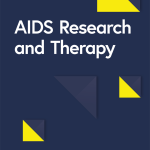In Canada between 2010/11 and 2022/23 there were 18,740 ED hospitalizations among children and youth, with 64.9% being first-time hospitalizations. The majority of ED hospitalizations in Canada were among females and youth. The rates of total and first-time ED hospitalizations significantly increased during the study period, with the highest rates reported in 2021. Across Canada, Ontario and British Columbia had the highest rates of ED hospitalizations.
Rates of ED hospitalizations were significantly higher among females compared to males, across all ages and diagnoses, in our study. Higher rates of EDs among females is well documented in the literature, however, there are still a considerable number of males with EDs [6, 8, 9, 11, 12, 15, 20, 29]. The distribution of ED diagnoses was similar between males and females in our study, however, males had a higher proportion of other EDs compared to females. This difference may be due to males not meeting the diagnostic criteria or having different clinical presentations for EDs, and therefore are being captured in the other ED category [9, 29, 30].Additionally, males are more likely than females to present with ARFID [29,30,31,32,33], which falls into our category of other EDs.
Youth had significantly higher rates of ED hospitalizations compared to children in our study. Throughout adolescence the rates of ED hospitalizations increased, with a peak at ages 15 and 16 years. The age at onset for most EDs occurs during adolescence (ages 14 to 18) [2, 8, 13, 15, 34], however, several studies have reported that the age of onset for many EDs has decreased over the past decade, with more children under the age of 10 years being diagnosed [2, 8, 13,14,15]. In our study, the mean age for an ED hospitalization significantly decreased from 2010 to 2022, with the lowest average ages seen during the pandemic period. There are many factors that may influence the shifting age at hospitalization, including changes to cultural or personal norms, earlier access to social media, and participation in weight or body-image centered sports/activities [2, 3, 8, 14]. During the pandemic, children spent more time at home, which may have led to caregivers being more aware of the child’s eating behaviours and cognition, potentially resulting in earlier encounters with the healthcare system [21, 35]. Males in our study were hospitalized for an ED at significantly younger ages than females. Some research confirms this finding [11, 15], whereas other studies report no clear sex-differences of age of onset [7, 31]. Additionally, males are more frequently diagnosed with ARFID, which is an ED that is typically diagnosed earlier than AN or BN, [29,30,31,32,33] which may explain the younger age of hospitalization among males in our study.
Our trend analysis showed an initial increase in ED hospitalizations from 2010/11 to 2013/14 after which, trends remained stable until 2019/20, followed by a spike from 2020/21 to 2022/23. In 2013, the Diagnostic and Statistical Manual of Mental Disorders (DSM), was updated, with several changes made to the ED diagnostic criteria [36]. Although ICD-10 codes did not change during this time, physicians base their diagnoses on the criteria in the DSM-5. The new, broader criteria in the DSM-5 may have lead to more patients being diagnosed with AN and fewer patients being diagnosed with unspecified EDs, around that time [36, 37]. Several studies highlight the increase in ED cases during the pandemic period [18,19,20,21, 35, 38,39,40]. Results have shown that hospitalization rates for EDs in 2022 started to decline, but are still higher than pre-pandemic [21, 38, 41]. This trend may be due to public health measures such as lockdowns and school closures causing increased isolation [17, 18], as well as longer wait times or changes to treatment during the pandemic [17]. Additionally, it is reported that during the pandemic, there was an increased preoccupation with fitness, weight gain and social media, which may have contributed to new cases of disordered eating, as well as worsening symptoms among those already diagnosed [42]. These results, emphasize the need for early screening and monitoring of children and youth presenting with disordered eating behaviours, in order to implement early and consistent treatment, which may aid in minimizing cases of inpatient hospitalization for EDs.
Across provinces/territories, Ontario and British Columbia had significantly higher rates of both total and first-time ED hospitalizations. There is limited Canadian research examining ED epidemiology at the provincial/territorial level, however one recent study, of five provinces, noted that hospitalizations for EDs were higher in hospitals in Ontario, Quebec and British Columbia compared to hospitals in Alberta and Newfoundland and Labrador [18]. Inequitable access to specialized hospital-based ED units across Canadian provinces/territories may in part explain hospitalization patterns in British Columbia and Ontario, where there is greater accessibility to specialized ED units compared to the rest of the country (excluding Quebec) [43].
Patients hospitalized for AN had significantly longer average LOS compared to those hospitalized for other EDs. We found that from 2010 to 2022, the average LOS for patients with an ED decreased significantly. Among the limited research available on hospital LOS, results vary from about 12 days to over 200 days, [44,45,46] with LOS decreasing over the last several years [44]. Several factors such as presence of comorbid conditions, severity of the ED, hospital resources, access to outpatient treatments and the COVID-19 pandemic may have an influence on LOS [44, 45]. The majority of patients in our study were discharged home following hospitalization. One study found that more than half of patients were discharged to a medical practitioner, and about 20% were referred to outpatient care. [47]
Limitations
This study has several limitations inherent to administrative data. The DAD is unable to report sociodemographic characteristics or gender, which would have strengthened our study as certain population groups are disproportionately affected by EDs [17, 48]. Results from Quebec could not be reported due to data sharing agreements. Lastly, our results may be biased towards more severe ED cases, as we only captured acute inpatient hospitalizations.
There may be some misclassification of first-time ED hospitalizations. Scrambled health card numbers were used to identify ED hospitalizations across Canada between 2001 and 2022. This method creates challenges in identifying patients who may have received a new health card number during this time.
Additionally, we were unable to present disaggregated results for ARFID and binge eating disorder, due to the limited ICD-10 codes for EDs. The codes available do not capture the full spectrum of ED presentations and several diagnoses are grouped together.






Add Comment